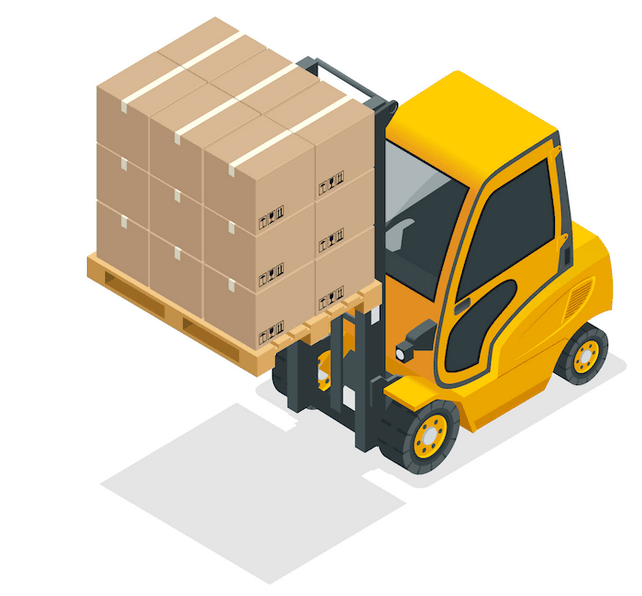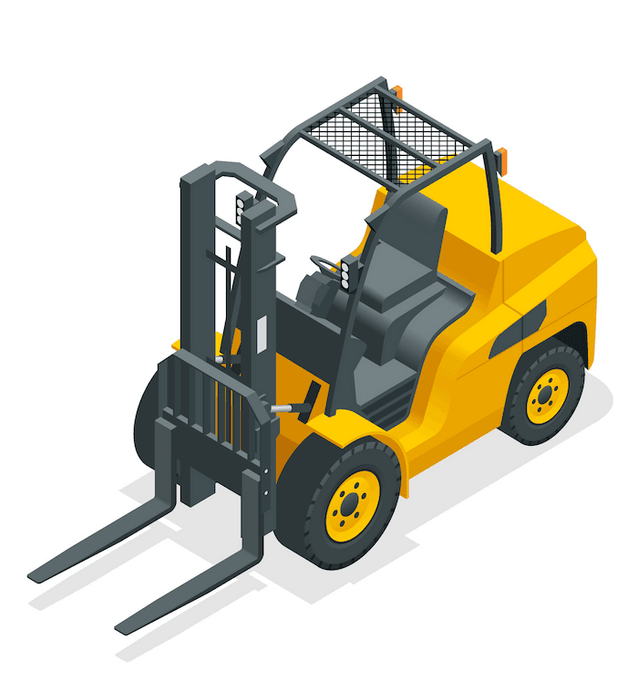Which forklift classes does a forklift certification cover?
As a Forklift Operator, you may be asked to operate several different types of forklift trucks while on the job. Some are more appropriate for outdoor rough terrain, while others are meant for narrow aisles within a warehouse. Forklift trucks are grouped into similar types, called classes.
There are 7 classes of forklift and if you drive a forklift, it will fall into one of these classes:
- Class 1: Electric Motor Rider Trucks
- Class 2: Electric Motor Narrow Aisle Trucks
- Class 3: Electric Motor Hand Trucks or Hand/Rider Trucks
- Class 4: Internal Combustion Engine Trucks (Solid/Cushion Tires)
- Class 5: Internal Combustion Engine Trucks (Pneumatic Tires)
- Class 6: Electric and Internal Combustion Engine Tractors
- Class 7: Rough Terrain Forklift Trucks
Forklift Classes Covered With A Forklift Certification
Not all forklift certifications are created equal. Some focus on just one class of forklift truck, while others focus on several. Ideally, a certification should cover at a minimum all of the forklift classes that you may need to operate while on the job.
To give yourself the most flexibility, it’s advised to look for forklift training that covers all of the classes, that way you can have full coverage for the next 3 years. And it’s the best bang for your buck!
Here at Liftoff Certifications, all of our forklift courses include training for all 7 classes, which means you’ll be covered no matter which class you encounter. Pay once and be covered for all 7 classes – that’s the best combination.
Let’s take a look at what the differences are amongst the forklift classes.
The Seven Classes of Forklift Trucks
Class 1: Electric Motor Rider Trucks

This type of electric forklift is ideal for indoor working environments that prohibit fuel fumes and regulate air quality. Industrial batteries and an electric motor are typical of a Class 1 forklift, as well as cushion tires designed for use on smooth, indoor floors or pneumatic tires used in dry working conditions. Class 1 forklifts can be stand-up rides or sit down models.
Examples of Class 1 Forklifts:
- Counterbalanced Rider Type, Stand Up
- Three Wheel Electric Trucks, Sit Down
- Counterbalanced Rider, Cushion Tires, Sit Down
- Counterbalanced Rider, Pneumatic or Either Type Tire, Sit Down
Class 2: Electric Motor Narrow Aisle Trucks

Similar to the Class 1 forklift, Class 2 is made specifically for narrow aisles. If you have less space, a Class 2 narrow aisle truck is what you may be operating.
Examples of Class 2 Forklifts:
- High Lift Straddle
- Order Picker
- Reach Type Outrigger
- Side Loaders: Platforms
- Side Loaders: High Lift Pallet
- Turret Trucks
- Low Lift Platform
- Low Lift Pallet
Class 3: Electric Motor Hand Trucks or Hand/Rider Trucks

You’ll see Class 3 trucks in walk-behind and rider models, which are used to quickly unload trucks. Hand trucks and pallet jacks are examples of Class 3 trucks.
Examples of Class 3 Forklifts:
- Low Lift Platform
- Low Lift Walkie Pallet
- Tractors
- Low Lift Walkie/Center Control
- Reach Type Outrigger
- High Lift Straddle
- Single Face Pallet
- High Lift Platform
- High Lift Counterbalanced
- Low Lift Walkie/Rider and Pallet and End Control
Class 4: Internal Combustion Engine Trucks (Solid/Cushion Tires)

Forklifts with an Internal Combustion Engine (ICE) can handle loads from 3,000 to 15,500 lbs. Class 4 are outfitted with cushion tires for smooth floors and run off of liquid propane (LPG) fuel or diesel.
Example of Class 4 Forklift:
- Fork, Counterbalanced (Cushion Tire)
Class 5: Internal Combustion Engine Trucks (Pneumatic Tires)

As you’ll find out in the next section about tires, this Class 5 forklift uses pneumatic tires that are designed for travel on rough surfaces (typically outdoor). Class 5 forklifts have a much higher lifting capacity – ranging from 3,000 to 55,000 lbs… over 3 times as much as Class 4!
Example of Class 5 Forklift:
- Fork, Counterbalanced (Pneumatic Tire)
Class 6: Electric and Internal Combustion Engine Tractors
This class of forklift is used indoors and outdoors to tow rather than lift a load. They have a much lower capacity range (up to 6,000 lbs).
Example of Class 6 Forklift:
- Sit-Down Rider (Draw Bar Pull Over 999 lbs.)
Class 7: Rough Terrain Forklift Trucks

Typically diesel powered, a Class 7 forklift is used on construction sites and other work environments that would necessitate a rugged truck.
Example of Class 7 Forklift:
- Vertical mast type
- Variable reach type
- Truck/trailer mounted
Get Forklift, MEWP & Fall Protection Certified Today with Liftoff Certifications
Liftoff Certifications offers some of the industry’s most affordable Forklift Operator, MEWP (Boom & Scissor Lift) Operator, and Fall Protection Certification and Recertification courses and is the gold standard for online OSHA training.
If you are ready to give an online forklift certification or recertification a try, get signed up today for our OSHA Forklift Operator Training.
For our MEWP (Boom & Scissor Lift) training, get signed up today for the OSHA MEWP Operator Training.
And for Fall Protection, get registered for by clicking here for the OSHA Fall Protection Training.
We’ve got you covered with a 100% money back guarantee and we guarantee national acceptance of our OSHA certification.


